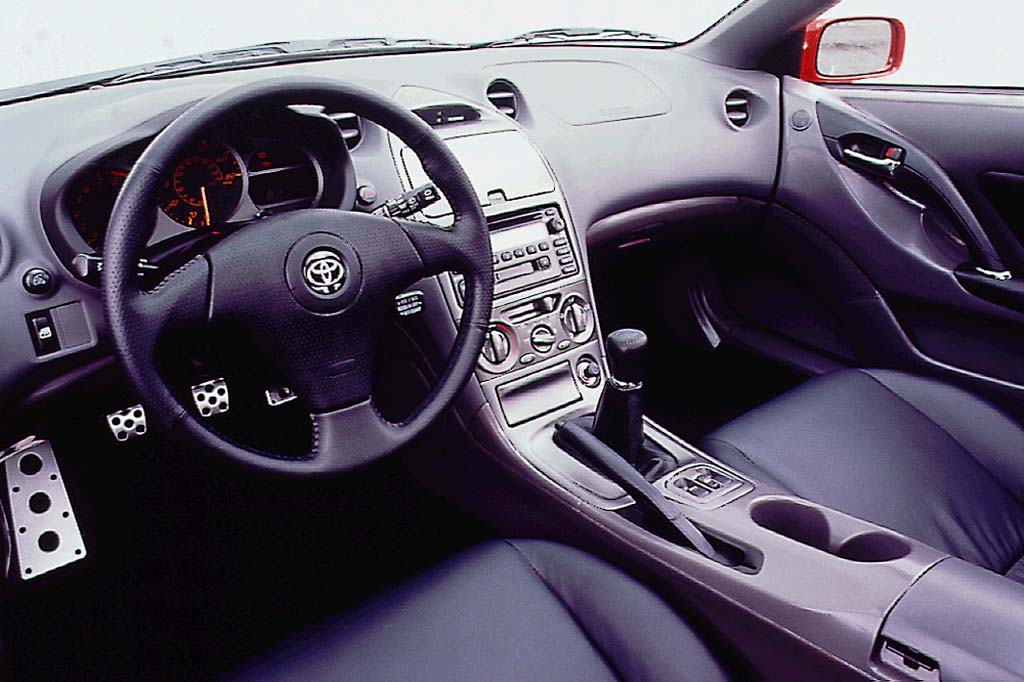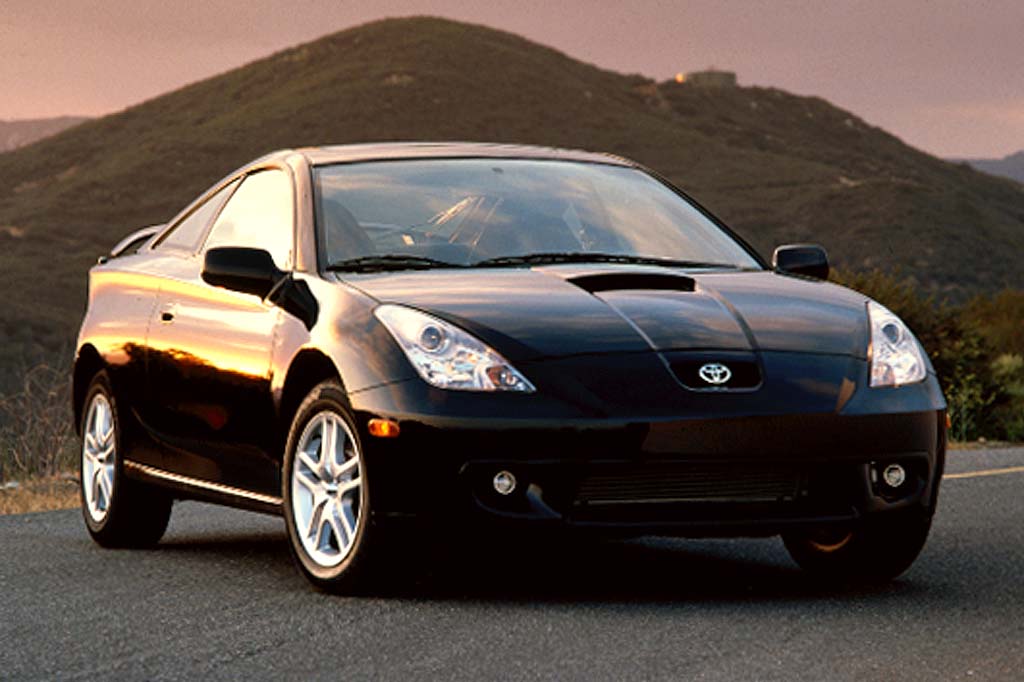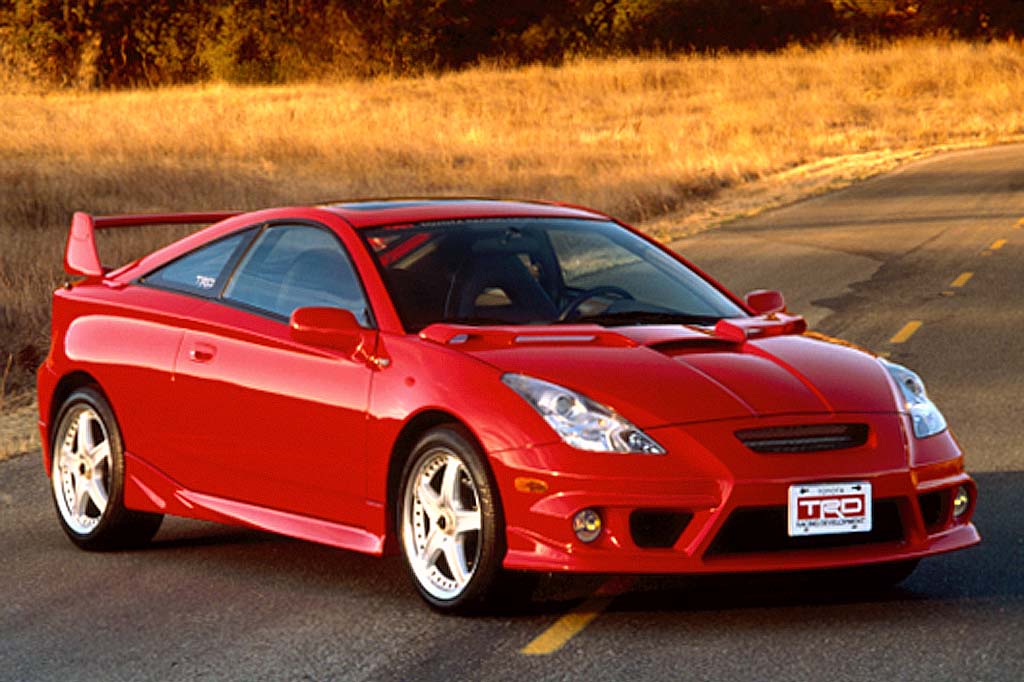| Sporty/performance car; Built in Japan |
|
|
| Good condition price range: $3,600 – $8,800* |

2000 Toyota Celica GT-S

2000 Toyota Celica GT-S

2000 Toyota Celica interior

2000 Toyota Celica GT

2000 Toyota Celica TDR
| Pros: |
|
| Cons: |
|
Though capable and fun to drive, the Celica is noisy and lacks the low-end torque for decent acceleration with an automatic transmission. An Acura Integra offers similar high-rpm responses from a smoother 4-cylinder engine. Mitsubishi’s Eclipse has a V6 option. Adventurous styling and Toyota’s reputation for reliability help Celica appeal to the younger crowd, but prices are high.
Overview
Now in its seventh generation, Toyota’s redesigned front-drive 2-door hatchback coupe came in GT and sportier GT-S trim. No convertible was offered. Wheelbase grew by 2.4 inches, but the new coupe was about 4 inches shorter overall, half an inch narrower, and about as tall as its predecessor. Basic engine in the GT was a 1.8-liter 4-cylinder, making 140 horsepower. For the GT-S, that engine incorporated Toyota’s VVT-i variable-valve-timing system and developed 180 bhp. A 5-speed manual transmission was standard in the GT, but the GT-S got Celica’s first 6-speed. Either model could have an optional 4-speed automatic transmission. The automatic in the GT-S included a provision for manual gear selection, using four steering-wheel buttons. Side-impact airbags for front seats were optional for the first time, along with antilock braking. Standard equipment included air conditioning, power mirrors, tilt steering, and a CD stereo. The GT-S could get 16-inch alloy wheels instead of steel 15-inchers, and could be fitted with leather upholstery. Both models could have an optional external-sliding power moonroof.
Yearly Updates
| 2001 Celica No significant change was evident in the 2001 models. |
| 2002 Celica Available on both models for 2002, the new Action Package option included an adjustable rear spoiler and unique lower-body addenda. |
| 2003 Celica All Celicas got revised front- and rear-end appearance, new-look gauges, and altered hues for dashboard, seat fabrics, and headliner. Also, Celica’s premium audio was a new JBL system; it’s standard for GT-S and optional for GT and includes a power antenna to replace a fixed-mast type. Hi-intensity headlamps joined the option list. |
| 2004 Celica The only change in 2004 is the availability of high-intensity headlamps on both the GT and the GT-S. |
| 2005 Celica The Celica is virtually unchanged for 2005, which Toyota says will be their final model year. |
